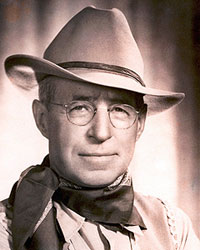
Waite Phillips was an American petroleum businessman who created a fully integrated operation that combined petroleum producing, refining and marketing. With headquarters in Tulsa, Oklahoma, he also developed several office complexes and engaged in banking and ranching. Phillips was a philanthropist for both local Tulsa institutions and national causes. In Tulsa he built a 72-room mansion for his residence, which he later donated to the city; it became the Philbrook Museum of Art. He gave 127,000 acres (510 km2) of his favorite ranch in New Mexico to the Boy Scouts of America, together with an office building as part of its endowment. The ranch is now Philmont Scout Ranch, one of the largest youth camps in the world. Phillips also made a substantial bequest to the University of Southern California, which named a building after him.

The Boston Avenue United Methodist Church, located in downtown Tulsa, Oklahoma, and completed in 1929, is considered to be one of the finest examples of ecclesiastical Art Deco architecture in the United States, and has been placed on the National Register of Historic Places. Built by a congregation of the Methodist Episcopal Church, South, it was designated a National Historic Landmark in 1999. It has 15 floors.

The Villa Philmonte is a large ranch home located outside of Cimarron, New Mexico, on Philmont Scout Ranch, owned by the Boy Scouts of America. It was listed on the National Register of Historic Places in 1995 as part of Villa Philmonte Historic District, which included two contributing buildings, two contributing structures, and two contributing sites. Those resources are the Villa Philmonte, an associated guesthouse, two courtyards, and a pool, pergola and pond.

Philbrook Museum of Art is an art museum with expansive formal gardens located in Tulsa, Oklahoma. The museum, which opened in 1939, is located in a former 1920s villa, "Villa Philbrook", the home of Oklahoma oil pioneer Waite Phillips and his wife Genevieve. Showcasing nine collections of art from all over the world, and spanning various artistic media and styles, the cornerstone collection focuses on Native American art featuring basketry, pottery, paintings and jewelry.
The title of "Oil Capital of the World" is often used to refer to Tulsa, Oklahoma. Houston, Texas, the current center of the oil industry, more frequently uses the sobriquet “The Energy Capital of the World.”

The Mid-Continent Tower is a 36-story skyscraper located at 401 South Boston Avenue in downtown Tulsa, Oklahoma. At 156 meters (513 ft) in height, it is the fourth-tallest building in Tulsa and fifth-tallest in Oklahoma. Faced with bright white terra cotta and crowned with a distinctive copper roof, it is one of the city's most recognizable buildings. The design is unique because the first 16-story structure was built in 1918. The top 20 stories comprise a separate structure, cantilevered over the first 66 years later. The architects of the addition matched the design of the original structure so carefully that the result is considered a single structure. It is included as a contributing structure in Tulsa's Oil Capital Historic District.

Frank Freeman Phillips was an American oilman who with his brother Lee Eldas Phillips co-founded the Phillips Petroleum Company in 1917. Phillips served as the company's president from 1917 to 1939 and as its chairman from 1939 to 1949.

The Atlas Life Building is a historic twelve-story building in downtown Tulsa, Oklahoma. Designed by the firm Rush, Endacott and Rush, the building was completed in 1922. It is located at 415 S. Boston Avenue, sandwiched between the Philtower and Mid-Continent Tower. On May 19, 2009, it was added to the U.S. National Register of Historic Places. Originally an office building, it was converted to hotel use in 2010.
Maple Ridge is a historic district in Tulsa, Oklahoma. It is bounded by the Inner Dispersal Loop on the north, Hazel Boulevard on the south, Peoria Avenue on the east and the Midland Valley Railroad right of way on the west. The northern portion of the district, between 15th Street and 21st Street, has been zoned with Historic Preservation Overlay Zoning by the City of Tulsa and is called North Maple Ridge.
Downtown Tulsa is an area of approximately 1.4 square miles (3.6 km2) surrounded by an inner-dispersal loop created by Interstate 244, US 64 and US 75. The area serves as Tulsa's financial and business district; it is the focus of a large initiative to draw tourism, which includes plans to capitalize on the area's historic architecture. Much of Tulsa's convention space is located in downtown, such as the Tulsa Performing Arts Center and the Tulsa Convention Center, as well as the BOK Center. Prominent downtown sub-districts include the Blue Dome District, the Tulsa Arts District, and the Greenwood Historical District, which includes the site of ONEOK Field, a baseball stadium for the Tulsa Drillers opened in 2010.
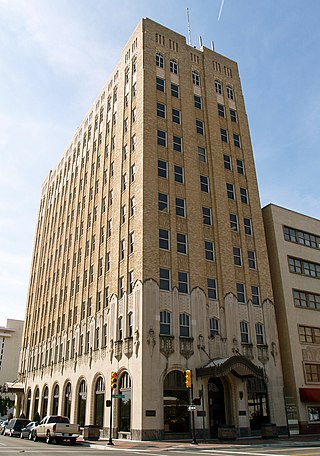
The Oklahoma Natural Gas Company Building is a historic building in Tulsa, Oklahoma, at 624 South Boston Ave. It was one of the first local Art Deco buildings built in the new Art Deco style, along with the Public Service of Oklahoma Building. This choice by the relatively conservative utility companies made the style acceptable in the city, with many Art Deco buildings built subsequently in Tulsa. The building was designed by Frank V. Kirshner and Arthur M. Atkinson. It was built of reinforced concrete, and clad in buff brick, except for the lower two stories, which are clad in limestone. The verticalness of the building is emphasized by piers rising the entire height of the facade with windows placed between the piers.

The Petroleum Building is a 50-meter/10-floor building at 420 South Boulder in Tulsa, Oklahoma. It was built in 1921, and is a steel and reinforced concrete structure faced with buff brick. The name was given because most of the early tenants were associated with the petroleum industry. Later, it housed the Mayo Brothers Furniture Company. It was identified as one of the supporting structures during the creation of the Oil Capital Historic District.
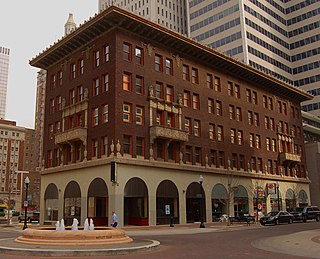
The McFarlin Building is a general office building located on the northeast corner of Fifth Street and Main in downtown Tulsa, Oklahoma. The five-story building was built in 1918 by Barnett, Haynes & Barnett for oilman Robert M. McFarlin, and is on the National Register of Historic Places. It is also a contributing property for the Oil Capital Historic District.

Keene & Simpson was an American architectural firm based in Kansas City, Missouri, and in practice from 1909 until 1980. The named partners were architects Arthur Samuel Keene FAIA (1875–1966) and Leslie Butler Simpson AIA (1885–1961). In 1955 it became Keene & Simpson & Murphy with the addition of John Thomas Murphy FAIA (1913–1999), who managed the firm until his retirement in 1980.
The following is a timeline of the history of the city of Tulsa, Oklahoma, United States.
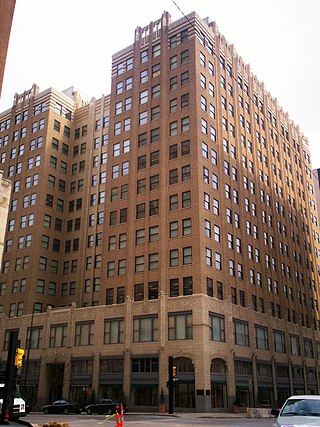
The Philcade Building is an office building in downtown Tulsa, Oklahoma at the southeast corner of East 5th Street and South Boston Avenue. Designed by Leon B. Senter, for oilman Waite Phillips, it was begun in 1929 and completed in 1931. It is noted for its Art Deco zigzag style architecture. The building was listed in the National Register on September 18, 1986, under National Register Criterion C. Its NRIS number is 86002196. It is also a contributing property of the Oil Capital Historic District in Tulsa.

The Oil Capital Historic District (OCHD) is an area in downtown Tulsa, Oklahoma that commemorates the success of the oil business in Tulsa during the early 20th century. During this period, Tulsa was widely known as "The Oil Capital of the World." The area is bounded by 3rd Street on the north and 7th Street on the south, Cincinnati Avenue on the east and Cheyenne Avenue on the west.

The Southwestern Bell Telephone Company constructed a two-story building in 1924. The structure, which encompassed 18,726 square feet (1,739.7 m2), was to house the main dial equipment for the new automatic dial equipment that the company had introduced to Tulsa in November 1924. The architecture of the building was Gothic Style. In 1930, the company added four floors to the top of the 1924 structure to house its divisional offices and toll terminal equipment needed for the underground cable that connected Tulsa with Oklahoma City. The 1930 addition was constructed in Zig Zag Art Deco Style.
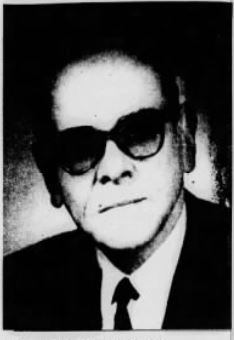
Leon Bishop Senter was an American architect who worked primarily in Oklahoma. Although not formally educated in architecture, he became Oklahoma's first licensed architect in 1925 and designed several buildings on the National Register of Historic Places.



















